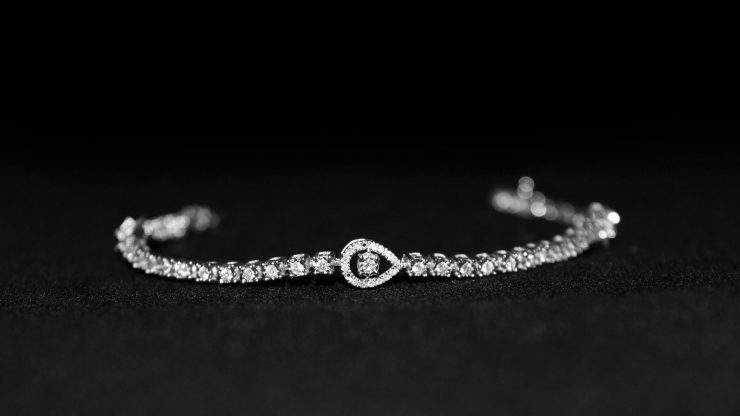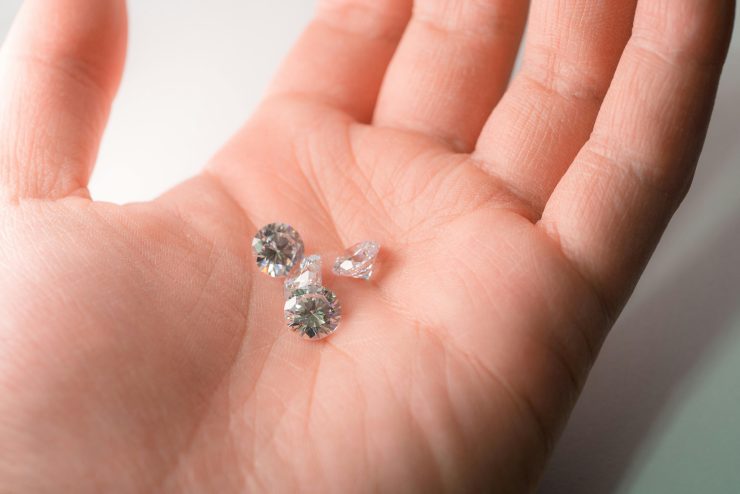Lab-grown diamonds have gained significant popularity in recent years due to their ethical sourcing, eco-friendly production methods, and often lower price points compared to natural diamonds. However, despite these advantages, many buyers are unaware that prices for lab-grown diamonds are not fixed and can be negotiated. Understanding the basics of the lab-grown diamond market is critical before entering any negotiation. These diamonds are chemically and physically identical to mined diamonds, but their production process allows for greater control over quality and supply. This controllability has contributed to more consistent inventory levels and pricing structures. Still, variations exist between brands, grading laboratories, and sellers. Some retailers position their lab-grown diamonds as luxury items, while others focus on affordability. These differences can significantly impact pricing. Also, because lab-grown diamonds are relatively new to the mainstream market, many jewelers are still adjusting their pricing models, which opens the door to more flexible negotiations. Familiarity with market dynamics, supply chain considerations, and current price ranges will help you approach any deal from an informed position, giving you the upper hand when discussing price.

Researching and Comparing Retailers
Before entering into negotiations, one of the most powerful tools at your disposal is research. The market for lab-grown diamonds includes a wide array of retailers, from online direct-to-consumer brands to brick-and-mortar stores. Each may have different pricing models, promotional strategies, and negotiation flexibilities. Spend time exploring multiple vendors, noting the price differences for diamonds of similar carat, cut, clarity, and color. Many online platforms allow you to filter by grading report (such as GIA or IGI), which is essential when comparing apples to apples. A diamond with the same specifications may be priced 10-30% differently depending on where you shop. Additionally, investigate seasonal sales events, discount codes, and loyalty programs that can be leveraged during negotiations. Look for retailers with price match guarantees or ones that are known to entertain counteroffers. Online customer reviews, BBB ratings, and Reddit threads can offer additional insight into each vendor’s pricing behavior and willingness to negotiate. Having multiple quotes in hand not only provides bargaining leverage but also communicates to sellers that you are an informed and serious buyer.
Knowing Which Diamond Characteristics Influence Price Most
In negotiation, knowledge is leverage. Understanding which characteristics most significantly influence the price of a lab-grown diamond can help you identify areas where compromises can be made to achieve a better deal. The Four Cs—cut, color, clarity, and carat weight—are the primary factors that determine a diamond’s value. Among these, cut and carat typically have the largest impact on price. A slight drop in carat weight (for example, choosing a 0.90-carat stone instead of a 1.00-carat one) can reduce the cost substantially with minimal perceptual difference in size. Similarly, opting for a diamond with slightly lower clarity or color grade—especially if imperfections are not visible to the naked eye—can lower the price without sacrificing beauty. In lab-grown diamonds, the grading standards are just as rigorous as mined diamonds when certified by institutions like GIA or IGI. However, because lab-grown stones can be produced with fewer impurities, they often receive higher grades across the board, allowing for more flexibility in choosing “value” stones that still look exceptional. Armed with this knowledge, you can strategically adjust your preferences during negotiations to get the best value.
Timing Your Purchase Strategically
Timing can play a crucial role in your ability to negotiate the price of a lab-grown diamond. Like most retail sectors, the jewelry industry has peak seasons and slow periods that affect pricing flexibility. Major gift-giving holidays such as Valentine’s Day, Christmas, and wedding season (typically late spring through summer) see high demand, which may limit a retailer’s willingness to offer deep discounts. Conversely, shopping during off-peak months like January, March, or September can give you a stronger position. Retailers are more motivated to make sales during these periods and may be more open to negotiation or throw in additional perks such as free resizing, upgraded settings, or cleaning services. Furthermore, many jewelers aim to meet monthly or quarterly sales quotas. Purchasing toward the end of these cycles can give you additional negotiating power, especially at local or independently-owned stores. Signing up for retailer newsletters and tracking historical pricing trends can also help identify when prices are likely to dip or when special promotions are offered. Strategic timing aligns both your goals and the seller’s incentives, enhancing the odds of securing a favorable deal.
Leveraging Certification and Grading Reports
One of the most effective ways to negotiate confidently is to ensure the lab-grown diamond you are considering comes with a certification from a reputable grading laboratory. Certificates from the Gemological Institute of America (GIA), International Gemological Institute (IGI), or GCAL not only authenticate the diamond’s attributes but also serve as objective standards during negotiation. Retailers cannot easily inflate the quality of a diamond when presented with a universally recognized grading report. If you encounter a seller offering uncertified stones or using lesser-known certification agencies, proceed with caution. These diamonds might be priced attractively, but the lack of reliable grading can obscure hidden flaws or inflated valuations. During negotiations, referencing the certified qualities—especially if you’ve researched comparable diamonds with similar specs—can serve as compelling evidence to justify a lower price. You may also uncover inconsistencies in how different retailers price diamonds with the same grading, allowing you to call out price inflation directly. Furthermore, understanding what each component of a grading report means will prepare you to push back intelligently and avoid being swayed by superficial sales tactics.

Negotiating Tactics: Online vs. In-Store
The approach to negotiating prices on lab-grown diamonds varies significantly depending on whether you are purchasing online or in a brick-and-mortar store. Each channel offers unique opportunities and challenges. In-store negotiations tend to be more flexible because sales staff often have some authority or access to managerial approvals for discounts. Body language, tone, and in-person rapport can all influence the negotiation outcome. You can also inspect the diamond directly, which may allow you to point out characteristics that justify a better price. On the other hand, online purchases typically provide broader selection and lower baseline prices due to reduced overhead. While online retailers may appear to have “fixed pricing,” many will respond to inquiries submitted via chat or email, especially if you present a competitor’s offer. Some online jewelers have “make an offer” buttons or will entertain price-match requests. Regardless of the channel, always remain polite, professional, and informed. Prepare counteroffers based on comparable listings, and don’t hesitate to ask for extras like free engraving or shipping upgrades if the price itself cannot be lowered. Whether online or in-person, confidence and preparedness are key to successful negotiations.
Using Price Matching to Your Advantage
Price matching is one of the most underutilized but powerful tools when negotiating the price of a lab-grown diamond. Many retailers, especially online jewelers, will honor a lower price offered by a competitor for a diamond of comparable quality and certification. To take advantage of this, compile quotes from multiple sources—preferably including grading certificates and detailed specs for each diamond—and present them when engaging with a seller. Make sure the comparisons are as close as possible in terms of carat weight, color, clarity, cut, fluorescence, and certification authority. The more precise your match, the harder it will be for the seller to dismiss your request. In some cases, retailers will not only match the price but also beat it to secure the sale. Use this as a starting point to ask for further concessions, such as a better setting, a higher-grade metal for the band, or a complimentary service. It’s important to read the fine print of each retailer’s price match policy, as some may exclude limited-time sales or promotions. When applied correctly, price matching can help you secure high-value diamonds at the most competitive rates.
Asking the Right Questions to Open Negotiations
Successful negotiation starts with asking the right questions, which serve both to gather information and signal to the seller that you are a knowledgeable buyer. Begin by asking if there are any current promotions or discounts not advertised online. Follow up by inquiring about upcoming sales events or whether the listed price includes all available services, such as resizing, warranty, cleaning, or returns. This sets the tone that you are expecting value beyond the listed sticker price. You might also ask whether the store offers financing options, price adjustments if the item goes on sale shortly after purchase, or any bundling offers if you are purchasing additional jewelry. Inquire about the origins of the lab-grown diamond and whether it comes with GIA, IGI, or GCAL certification. Each of these questions helps open the conversation toward negotiation and uncovers areas where there may be room for flexibility. The goal is to gain insight into how prices are structured and to tactfully lead the seller into revealing their willingness to adjust pricing or add value to the deal.
Recognizing Sales Pressure and Walking Away When Necessary
One of the most important aspects of effective negotiation is recognizing when to walk away. High-pressure sales tactics are sometimes used in both physical stores and online platforms to push consumers into buying quickly, often by implying that inventory is limited or a deal is “one-time only.” While lab-grown diamonds are in growing demand, they are also manufactured and restocked regularly. Don’t let urgency override your judgment. If a seller seems reluctant to negotiate or you feel uncomfortable with the speed of the transaction, trust your instincts. The beauty of shopping for lab-grown diamonds is the abundance of choice. Thousands of nearly identical stones are available across multiple platforms, which means you are not restricted to a single store or deal. Walking away gives you time to compare other options and often prompts the seller to make a better offer—especially if you leave your contact information and let them know you are still considering other sources. Maintaining your negotiating position is crucial to getting the best deal. Don’t be afraid to pause and reassess. Patience often results in significant savings.
Avoiding Common Pitfalls and Red Flags
Even informed buyers can fall prey to common pitfalls when negotiating the price of a lab-grown diamond. One major mistake is focusing solely on the carat weight or price while neglecting other critical attributes like cut quality, fluorescence, or the reliability of the certification. A cheap diamond may appear attractive on paper but disappoint in brilliance or visual appeal. Be wary of sellers who do not offer clear documentation or try to substitute non-certified diamonds. Another red flag is excessive upselling—pressuring you into more expensive settings or add-ons that do not offer equivalent value. Always compare the total cost, including setting, resizing, and after-sale services. Don’t overlook the return policy, warranty, and upgrade programs either; the lack of a solid return option can be risky if you later find a better deal. Also, beware of vague or inconsistent grading language, like “near colorless” without an accompanying GIA or IGI grade. Avoiding these traps can protect you from overpaying and ensure that your negotiation is grounded in value rather than hype.